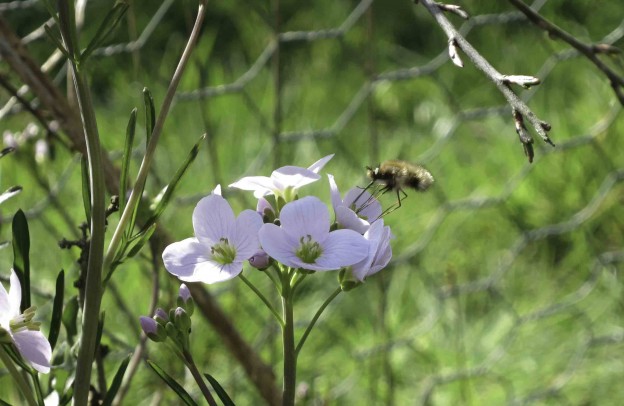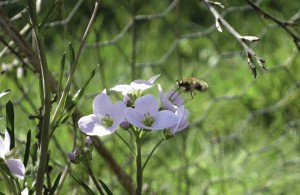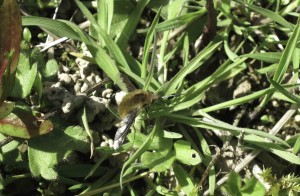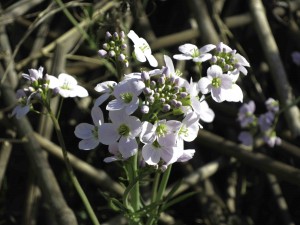Wildlife Springs into action!
Its a lovely Spring Day outside and with the sunshine comes all sorts of creatures to enjoy the warmth. This is a bee fly feeding on the nectar produced from a Cuckoo Flower (also known as a Ladies Smock).
The bee fly looks pretty frightening but its long proboscis is solely used to get at nectar. It makes a buzzing sound in flight not unlike a bumblebee. The larvae are parasitic on wasps and bees and the female fly flicks the eggs in the direction of the intended hosts burrows or failing that, lays the eggs on a feed plant in hope.
Here at Spring Farm Alpacas we have been farming in a wildlife friendly way for the past 20 years. When we first bought the farm, we intended to set it up as a nature reserve. We applied to and joined what was then Countryside Stewardship. All of our fields have a prescription for management and in most cases it involves enhancing habitat for wildlife.
We are passionate about trying to deliver that enhancement and if you come here to walk with our alpacas – please ask as many questions as you like about our process.
Seasonal Highlights!
One of the real beauties of offering walks all year round is that you may get to see wildlife – great and small – on any alpaca walk. Bee flies are Spring time highlights. If you come in late Spring for bluebells and wood anemones. Or perhaps come in Summer for wild flowers (such as common spotted and early purple orchids) and baby alpacas (called cria). Come in Autumn for changing leaves (were just next to Sheffield Park Gardens too) and lastly in Winter for the best chance for seeing wild deer (fallow and Roe).



